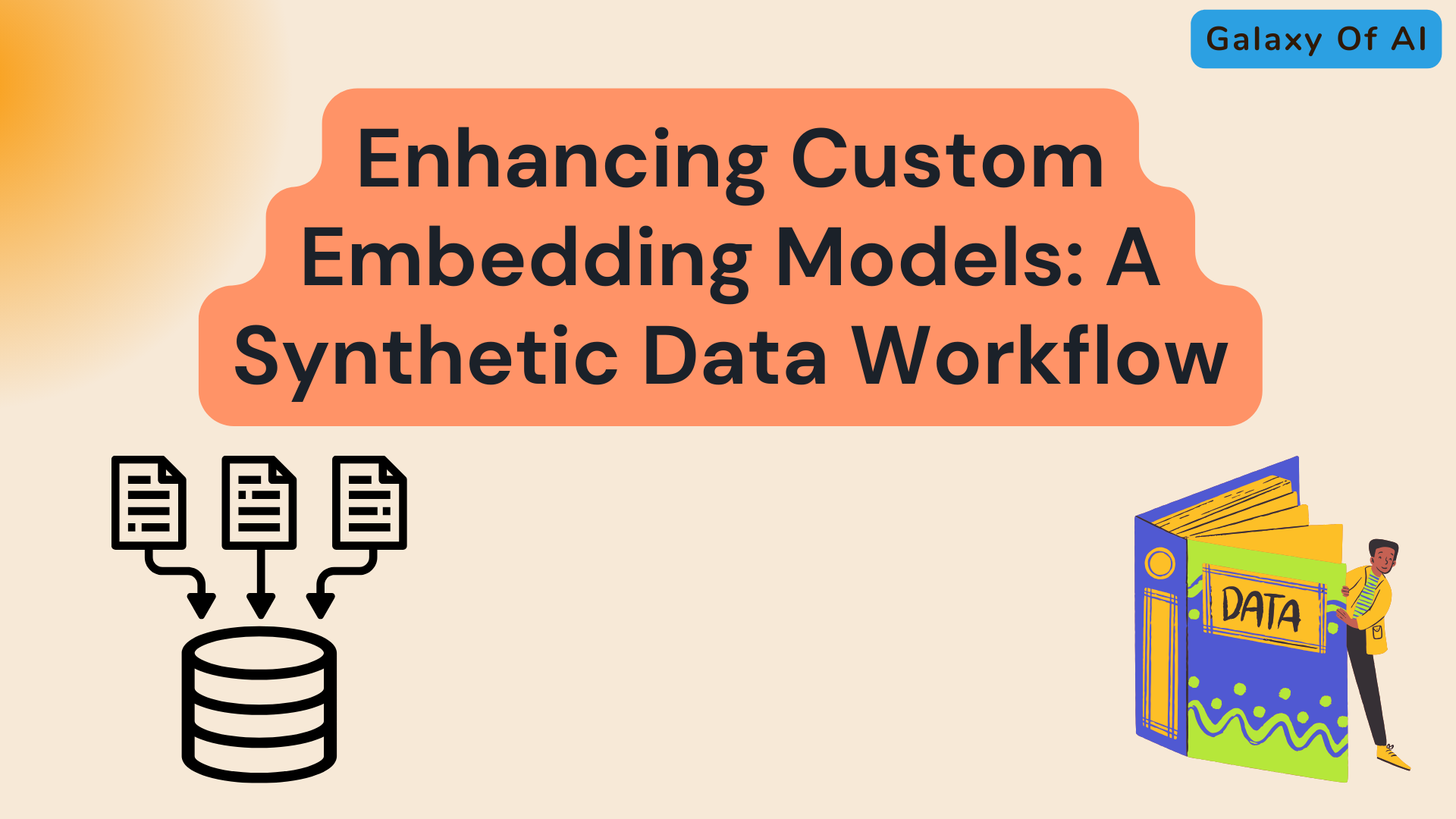Hello Learners…
Welcome to the blog…
Table Of Contents
- Introduction
- Enhancing Custom Embedding Models: A Synthetic Data Workflow
- Summary
- References
Introduction
In this post, we will learn about developing a workflow for generating synthetic data to enhance custom embedding models.
In today’s data-driven landscape, the demand for finely-tuned custom embedding models is ever-growing. These models serve as the backbone for various natural language processing (NLP) tasks, ranging from sentiment analysis to question answering systems.
However, the effectiveness of these models heavily relies on the quality and diversity of the data used for their training. In many cases, acquiring labeled data of sufficient quality and quantity can be challenging and expensive
To address this challenge, we propose a novel approach: the creation of a robust pipeline for generating synthetic data tailored specifically for fine-tuning custom embedding models.
This pipeline aims to automate and streamline the process of data generation, ensuring that the resulting data is diverse, high-quality, and well-suited for the task at hand.
Enhancing Custom Embedding Models: A Synthetic Data Workflow
Establish a Knowledge Base:
- We begin by compiling our domain-specific knowledge base, which may consist of PDFs or other documents containing relevant information. We then convert the content of these documents into a plain text format.
Chunking the Data:
- Our next step involves breaking down the text data into manageable chunks, with each chunk comprising approximately 256 tokens. This chunk size aligns with the requirements of RAG (Retrieval-Augmented Generation) later in the process.
Generating Questions Using LLM:
- Utilizing a Language Model (LLM), we generate a set of questions for each chunk of text. These questions should be answerable based on the content contained within the respective chunk. For instance, we prompt the LLM to “Generate five questions that can be answered using the following text: [insert chunk here].”
Optionally Generating Hard Negative Examples:
- We have the option to create hard negative examples by generating questions similar to the correct ones but with incorrect or misleading answers. Alternatively, during training, we can utilize other random samples from the batch as negative examples (in-batch negatives).
Deduplicating and Filtering Pairs:
- To ensure uniqueness, we remove any “duplicate” question-context pairs. Additionally, we employ the LLM to assess and filter out lower-quality pairs based on custom rubrics for quality evaluation.
Fine-Tuning Embedding Models:
- Finally, we utilize the prepared data to fine-tune our embedding models using Sentence Transformers 3.0.
Summary
In summary, this pipeline offers a systematic and efficient approach to generating synthetic data for fine-tuning custom embedding models.
By automating the data generation process and leveraging advanced NLP techniques, we aim to empower researchers and practitioners to enhance the quality and effectiveness of their embedding models, ultimately advancing the state-of-the-art in natural language understanding and processing.
